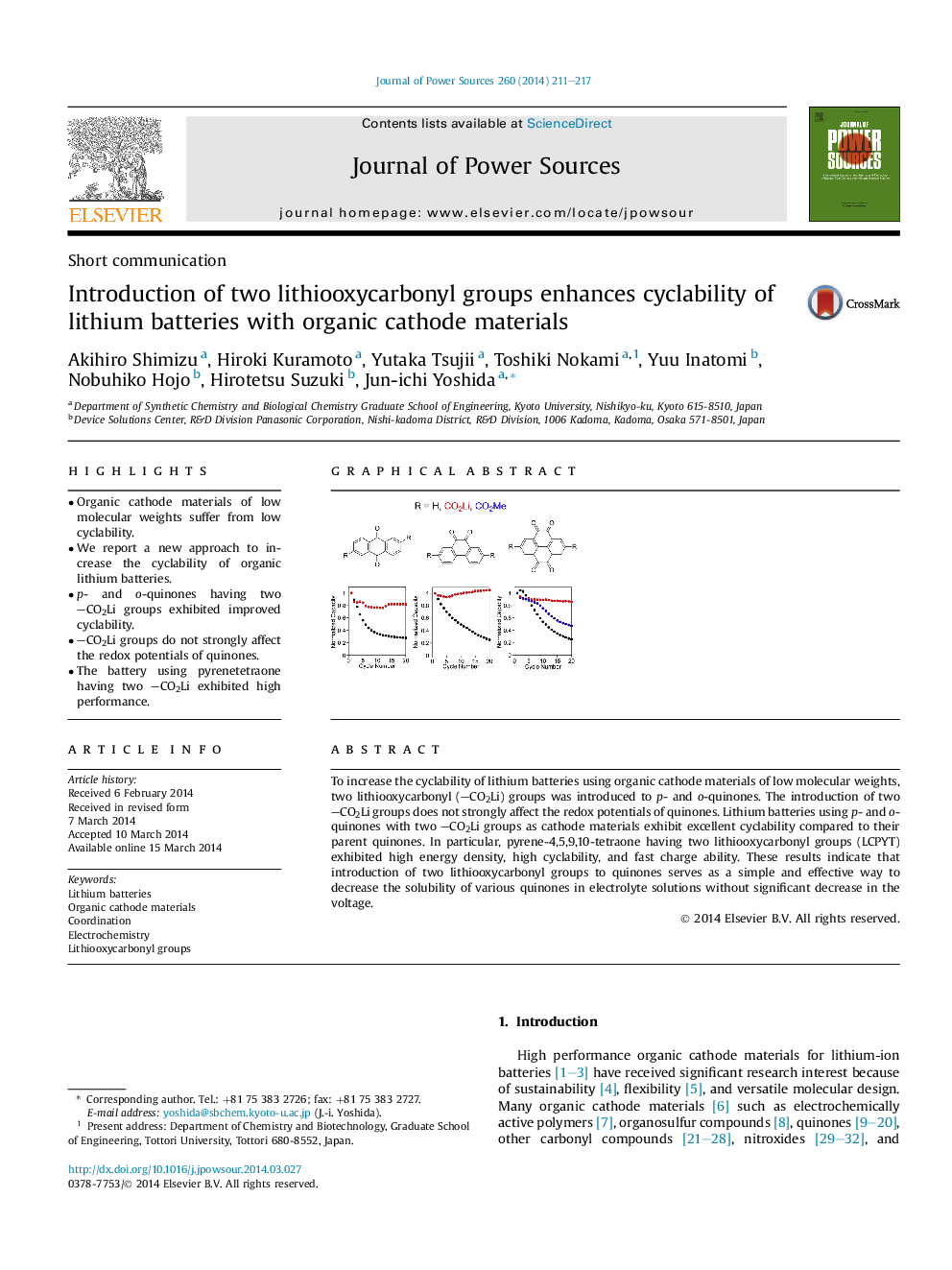| کد مقاله | کد نشریه | سال انتشار | مقاله انگلیسی | نسخه تمام متن |
|---|---|---|---|---|
| 1284152 | 1497972 | 2014 | 7 صفحه PDF | دانلود رایگان |
• Organic cathode materials of low molecular weights suffer from low cyclability.
• We report a new approach to increase the cyclability of organic lithium batteries.
• p- and o-quinones having two –CO2Li groups exhibited improved cyclability.
• –CO2Li groups do not strongly affect the redox potentials of quinones.
• The battery using pyrenetetraone having two –CO2Li exhibited high performance.
To increase the cyclability of lithium batteries using organic cathode materials of low molecular weights, two lithiooxycarbonyl (–CO2Li) groups was introduced to p- and o-quinones. The introduction of two –CO2Li groups does not strongly affect the redox potentials of quinones. Lithium batteries using p- and o-quinones with two –CO2Li groups as cathode materials exhibit excellent cyclability compared to their parent quinones. In particular, pyrene-4,5,9,10-tetraone having two lithiooxycarbonyl groups (LCPYT) exhibited high energy density, high cyclability, and fast charge ability. These results indicate that introduction of two lithiooxycarbonyl groups to quinones serves as a simple and effective way to decrease the solubility of various quinones in electrolyte solutions without significant decrease in the voltage.
Figure optionsDownload as PowerPoint slide
Journal: Journal of Power Sources - Volume 260, 15 August 2014, Pages 211–217
